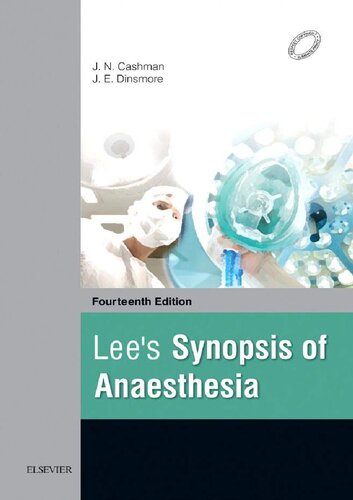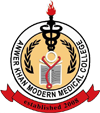| Title: |
Lee's synopsis of anaesthesia. |
| Author Name: |
J. N. Cashman and J. E. Dinsmore.
|
| Author Sur Name: |
CASHMAN, J. N.
|
| Author information: |
<p><strong>:</strong> The book Lee's Synopsis of Anaesthesia has been authored by multiple contributors over various editions. The main editors of the book are:</p>
<ul>
<li><strong>N. J. H. Davies</strong> - He was one of the main editors of the first few editions of the book.</li>
<li><strong>Jeremy N. Cashman</strong> - He has edited multiple editions of the book including the 13th and 14th editions. Jeremy Cashman has extensive editorial experience having been involved with Lee’s Synopsis of Anaesthesia since the twelfth edition and has edited a number of other textbooks including 6 editions of the Recent Advances in Anaesthesia series. He has co-authored over 100 publications including 40 peer-reviewed papers and 21 book chapters. In addition, he was a member of the editorial board of the European Journal of Anaesthesiology from 2000 to 2007. He is a past examiner for the Royal College of Anaesthetists' primary and final Fellowship examinations and for the Faculty of Pain Medicine Fellowship examination and has been a visiting examiner for the University of the West Indies MD (Anaesthetics) examination. In 2013, he received The Humphry Davy Medal in recognition of his sustained contribution to the work of the Royal College of Anaesthetists. He is uniquely qualified as the author of the chapter on Inhalational Anaesthesia having been the first human volunteer to receive the last new volatile anaesthetic agent introduced into clinical practice, desflurane, in 1988.</li>
<li><strong>Judith Dinsmore</strong> - She is the editor of the e-book version (Lee's Synopsis of Anaesthesia - E-Book) published in 2017. Judith Dinsmore has edited a pocketbook of neuroanaesthesia and published original articles and book chapters on a variety of topics. She has lectured nationally and internationally and performs pre-publication peer reviews of original manuscripts for several international journals. She is currently an examiner for both the Royal College of Anaesthetists' final Fellowship examination and for the Intercollegiate Specialty Board examination in neurosurgery. She is the past Secretary and current President of the Executive Council of the Neuroanaesthesia and Critical Care Society of Great Britain and Ireland. She organizes national educational meetings and represents society in several national working groups. She has extensive clinical experience with the technique of awake craniotomy overseeing the development and expansion of a high-quality service. She has lectured and published widely on the subject.
<p>Apart from the editors, the book also has contributions from various other authors for different chapters. The list of contributors for each edition is provided at the start of the book.</p>
<p>The book was first published in the 1970s and since then multiple updated editions have been published. The latest edition is the 14th edition published in 2022. With each new edition, the content is updated and revised to include the latest knowledge and practices in the field of anaesthesia.</p>
<p>Lee's Synopsis of Anaesthesia is a well-known pocket-sized textbook on anaesthesia. It covers various topics in a concise and readable manner, making it a handy reference for anaesthesiologists and trainees. The book focuses on the practical aspects of anaesthesia rather than theoretical details.</p>
</li>
</ul>
<p> </p>
|
| Edition/Published: |
14th ed. _New Delhi : Elsevier , 2017 |
| New to this edition: |
The 14th edition of Lee's Synopsis of Anaesthesia was published in 2020. Some of the key additions and updates in this latest edition compared to previous editions include:
• New chapters on topics like enhanced recovery after surgery, obstetric anaesthesia, anaesthesia for ambulatory surgery and day case surgery, and anaesthesia for minimally invasive procedures.
• Expanded sections on regional anaesthesia techniques, acute pain management, and anaesthesia for specific patient populations like the elderly, obese and children.
• Incorporation of the latest guidelines from organisations like the Association of Anaesthetists and the Resuscitation Council.
• Discussion of new drugs, equipment and monitoring technologies that have become available.
• Additional information on anaesthetic implications of common medical conditions and surgical procedures.
• Revision of existing chapters to reflect current evidence and best practice in anaesthesia.
• Inclusion of more diagrams, illustrations and tables to aid understanding.
• Updated references throughout the text.
In summary, the 14th edition of Lee's Synopsis of Anaesthesia aims to provide an up-to-date and comprehensive overview of anaesthesia while maintaining the concise format that has made this book popular with anaesthetists for decades. The key additions and revisions help ensure the synopsis remains relevant for trainees and practitioners in the
|
| Other's Book Information |
| Book ID No: |
2405
|
| Total Books: |
1
|
| Date of collection's: |
26-Dec-2018
|
| Donation / Purchase: |
Purchased
|
| Language: |
English
|
| Status: |
Available
|
| Department: |
Surgery
|
| Synopsis: |
Lee's Synopsis of Anaesthesia is a comprehensive textbook that covers all aspects of anaesthesia. It is written in a clear and concise style, and it includes many illustrations and tables to help readers understand the material. The book is divided into seven sections:
- Section 1: Preparation of the Patient for Surgery covers the assessment and preparation of the patient for surgery, as well as medical conditions that can influence anaesthesia.
- Section 2: General Anaesthesia covers the equipment used in general anaesthesia, monitoring of the patient during anaesthesia, inhalational and intravenous anaesthesia, neuromuscular blocking drugs, airway management, intravascular techniques, fluid administration and blood transfusion, acid-base and electrolyte balance, nutrition, and resuscitation.
- Section 3: Care of the Patient After Surgery covers care in the recovery area, acute pain management, regional anaesthesia, and anaesthesia for specific procedures and situations.
- Section 4: Chronic Pain covers the assessment and management of chronic pain.
- Section 5: Training, Standards and Safety in Anaesthesia covers the standards, education, safety, and quality improvement in anaesthesia.
- Appendices include a dictionary of rare medical disorders, a list of abbreviations, and an index.
Lee's Synopsis of Anaesthesia is a valuable resource for anaesthetists, students, and other healthcare professionals who need to know about the principles and practice of anaesthesia.
Here are some of the key features of the book:
- Comprehensive coverage of all aspects of anaesthesia.
- Clear and concise writing style.
- Use of illustrations and tables to help readers understand the material.
- Up-to-date information on the latest advances in anaesthesia.
- Dictionary of rare medical disorders.
Overall, Lee's Synopsis of Anaesthesia is a well-written and informative textbook that is an essential resource for anyone who needs to know about the principles and practice of anaesthesia.
|
| Description: |
An iconic textbook has its own place in the subject of Anaesthesia. Most suitable as a quick source of information during ward posting and for revision during exams. The book is divided into sections that cover patient preparation for anaesthesia, techniques of anaesthesia, post-operative care and pain management, regional anaesthesia and anaesthesia for specific procedures and situations.
|
| Key Features: |
The key features of Lee's Synopsis of Anaesthesia 14th Edition:
- Comprehensive coverage of every aspect of anaesthesia. The book covers all the major topics in anaesthesia, from patient preparation to techniques of anaesthesia to post-operative care.
- Clear, concise, and readable style. The book is written in a clear and concise style that is easy to understand, even for those who are not familiar with anaesthesia.
- Use of bullet lists, colour illustrations, tables, and summary boxes. This helps to break up the text and make it easier to read and understand.
- Dictionary of rare medical diseases. This is a useful reference for those who need to know more about rare medical conditions that can affect anaesthesia.
- Fully updated edition. The book has been fully updated to reflect the latest advances in anaesthesia.
Overall, Lee's Synopsis of Anaesthesia 14th Edition is a comprehensive and up-to-date textbook that is a valuable resource for anaesthetists, students, and other healthcare professionals.
Here are some additional details about the key features of the book:
- Section 1: Preparation of the Patient for Surgery covers the assessment and preparation of the patient for surgery, as well as medical conditions that can influence anaesthesia.
- Section 2: General Anaesthesia covers the equipment used in general anaesthesia, monitoring of the patient during anaesthesia, inhalational and intravenous anaesthesia, neuromuscular blocking drugs, airway management, intravascular techniques, fluid administration and blood transfusion, acid-base and electrolyte balance, nutrition, and resuscitation.
- Section 3: Care of the Patient After Surgery covers care in the recovery area, acute pain management, regional anaesthesia, and anaesthesia for specific procedures and situations.
- Comprehensive coverage of all aspects of anaesthesia.
- Clear and concise writing style.
- Use of illustrations and tables to help readers understand the material.
- Up-to-date information on the latest advances in anaesthesia.
- Dictionary of rare medical disorders.
The book also includes a glossary of terms, a list of abbreviations, and an index.
|
| Summary: |
In summary, the 14th edition of Lee's Synopsis of Anaesthesia provides a comprehensive yet concise overview of anaesthesia practice in an easy-to-use format. The pocketbook size, frequent use of summaries, tables and illustrations make it a useful quick reference guide for anaesthetists and trainees. The updated content ensures readers have access to the latest knowledge in the field.
Lee's Synopsis of Anaesthesia is a comprehensive yet concise guide to anaesthesia covering all aspects of the specialty. The 14th edition provides updated information on:
- Patient preparation and optimisation before anaesthesia
- Different anaesthesia techniques including general and regional anaesthesia
- Postoperative care and management
- Anaesthesia for specific procedures and populations
|
| Abstract: |
Lee's Synopsis of Anaesthesia is a comprehensive textbook that covers all aspects of anaesthesia. The 14th edition provides the following in the abstract:
- It covers patient preparation for anaesthesia, different anaesthesia techniques, post-operative care and pain management, regional anaesthesia and anaesthesia for specific procedures.
- The textbook is written in a clear, concise and readable style with frequent use of bullet lists, colour illustrations, tables and summary boxes.
- It contains a dictionary of rare adult and paediatric medical disorders in the appendices.
|
| Content: |
Section 1 - Preparation of the Patient for Surgery-1
Chapter 1.1 Assessment and Preparation-2
Chapter 1.2 Medical Conditions Influencing Anaesthesia-38
Section 2 - General Anaesthesia-91
Chapter 2.1 Anaesthetic Equipment-92
Chapter 2.2 Monitoring-109
Chapter 2.3 Inhalational Anaesthesia-127
Chapter 2.4 Intravenous Anaesthesia-155
Chapter 2.5 Neuromuscualr Blocking Drugs-182
Chapter 2.6 Airway Management-209
Chapter 2.7 IV Techniques, Fluid administration and Blood Transfusion-240
Chapter 2.8 Acid-base and Electrolyte Balance-254
Chapter 2.9 Nutrition-276
Chapter 2.10 Resuscitation-284
Section 3 - Care of the Patient after Surgery-295
Chapter 3.1 Care in the Recovery Area-296
Chapter 3.2 Acute Pain Management-309
Chapter 3.3 Complications of Anaesthesia and the Perioperative Period-338
Section 4 - Regional Anaesthesia-397
Chapter 4.1 Local Anaesthetic Agents-398
Chapter 4.2 Peripheral Neuroaxial Blockade-417
Chapter 4.3 Central Neuroaxial Blockade-466
Section 5 - Anaesthesia for Various Procedures-505
Chapter 5.1 Abdominal Surgery-506
Chapter 5.2 Cardiac Surgery-523
Chapter 5.3 Day Surgery-550
Chapter 5.4 Endcrine Surgery-566
Chapter 5.5 Gynaecological Surgery-579
Chapter 5.6 Neonatal and Paediatric Surgery-588
Chapter 5.7 Neurosurgery-614
Chapter 5.8 Obstretics-634
Chapter 5.9 Ophthalmic Surgery-659
Chapter 5.10 Anaestheisa for Dental and Maxillofacial Surgery-669
Chapter 5.11 Orthopedic and Trauma Surgery-682
Chapter 5.12 Otorhinolaryngology-707
Chapter 5.13 Plastic Surgery and the care of Burns-726
Chapter 5.14 Thoracic Anaesthesia-737
Chapter 5.15 Anaesthesia in Unusual Environments-759
Chapter 5.16 Urological Surgery-767
Chapter 5.17 Vascular Surgery-782
Section 6 - Chronic Pain-801
Chapter 6.1 Chronic Pain-802
Section 7 - Training, Standards and Safety in Anaesthesia-825
Chapter 7.1 Standards, Education, Safety and Quality Improvement-826
Appendix 1 - Dictionary of Adult Medical Disorders-841
Appendix 2 - Dictionary of Paediatric Medical Disorders-853
Index-885
|

